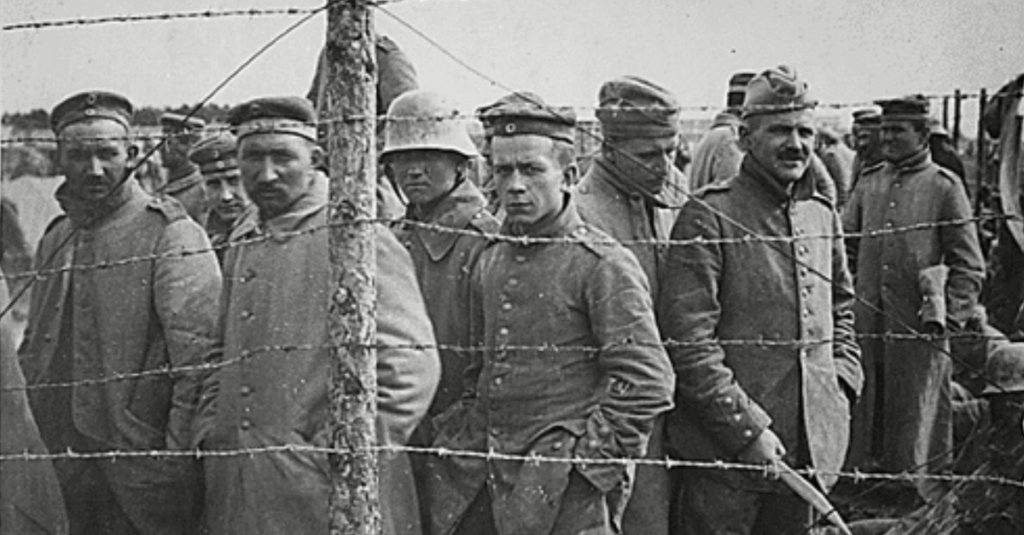All is fair in love and war? Not so. A war crime is a violation of international humanitarian law committed during armed conflict, in which the perpetrator can be held responsible for their actions. Until World War II, war crimes were not considered incidents worthy of prosecution. Historically, they were seen as inevitable consequences, resulting in wars that were unnecessarily gruesome and destructive. Spurred on by the horrors of the Holocaust, the Geneva Conventions of 1949 established that war criminals can and must be held accountable. So what does someone have to do to commit a war crime? According to the UN, these eight crimes are as bad as it gets.
Here are 8 things you can’t do to your enemies in war
1. Willful killing
You can’t just kill for the hell of it. While death is an unfortunate reality of war, lives should never be taken without good cause. “Black Christmas” was a horrifying example of this. On December 25th, 1941, when the British surrendered Hong Kong to the Japanese. Japanese soldiers blatantly disregarded the rules of peaceful surrender by looting, terrorizing, and murdering residents, and raping an estimated 10,000 women.
2. Torture or inhuman treatment, including biological experiments
It’s terrifying that this needs to be said, but history has proven that it does. During WWII, many German concentration camps conducted biological experiments on its prisoners in the pursuit of developing different treatments or testing different medical theories. Nazi doctors performed as many as 30 different types of non-consensual experiments on inmates.
3. Willfully causing great suffering, or serious injury to body or health

One might find this confusing since shooting down an enemy plane would by definition cause them serious injury or death. The difference lies in the intent of the attack- which should never be to cause more pain or suffering than necessary, particularly when the battle is over. The Bataan Death March of 1942 demonstrated the horrendous mistreatment of prisoners of war when approximately 75,000 Filipino and US soldiers surrendered to Japanese troops under General Masaharu Homma. The surrendering forces outnumbered their Japanese captors and were already emaciated and malnourished. The day after surrendering, POWs were forced to march 62 miles to the prison, Camp O’Donnell. Many prisoners were randomly beaten and starved. Those who could no longer bear the trek were shot, bayoneted, or beheaded.
4. Extensive destruction and appropriation of property, not justified by military necessity and carried out unlawfully and wantonly
When is pillaging towns and destroying civilian homes and shops ever necessary for military purposes? The Rape of Belgium defied the 1907 Hague Convention of Land Warfare. During World War I, in an effort to flush out Belgian resistance fighters, German occupiers committed a plethora of war crimes against civilians in Belgium, including mass looting and destruction of public and private property.
5. Compelling a prisoner of war or other protected person to serve in the forces of a hostile Power.
In other words, if you’re taken captive, you can’t be forced to fight against your own country. If you’re a child, you also can’t legally be forced into battle. During the Iran-Iraq War in the 1980s, Iran used child soldiers under the age of 15 (which in itself is a war crime) as forces. Children fought in highly dangerous situations and did so with limited training.
6. Willfully depriving a prisoner of war or other protected person of the rights of fair and regular trial
Say you captured some really terrible people. I mean, they tried to kill you, and they would have done it had they got the chance. Now, however, they’re your prisoners. You can’t just kill them. Like all humans, they deserve a fair trial. “The Bleiburg Massacre” of 1945 occurred when Yugoslav Nazi-backed troops, compiled of ethnic Serbs, Slovenians and Croats were executed without trial. It was done in vengeance for the pro-Axis genocide that had occurred during the war. Although this event remains controversial, victims were still held and executed without trial.
7. Unlawful deportation or transfer or unlawful confinement
You can’t kick people out of their country because it’s convenient for you, and you can’t capture people without good cause. In both 1941 and 1949, The People’s Commissariat for Internal Affairs, or NKVD, committed mass deportation of Baltic intelligentsia, landholders, and their families during the invasion of Lithuania, Estonia, and Latvia. Additionally, another example includes the enslavement of thousands of Korean and Chinese women during the Second Sino-Japanese War. Imperial Japanese troops pillaged villages within China and Korea, murdering civilians and capturing up to 200,000 women. They were forced to work in military brothels, where they became known as “comfort women.”
8. Taking of hostages
During both World War I and World War II, Germany repeatedly took hostages of those they suspected of conspiring against them. In World War II, the Nazi SS ruthlessly took civilians hostage in an effort to end the resistance. Most of these hostages were executed.

